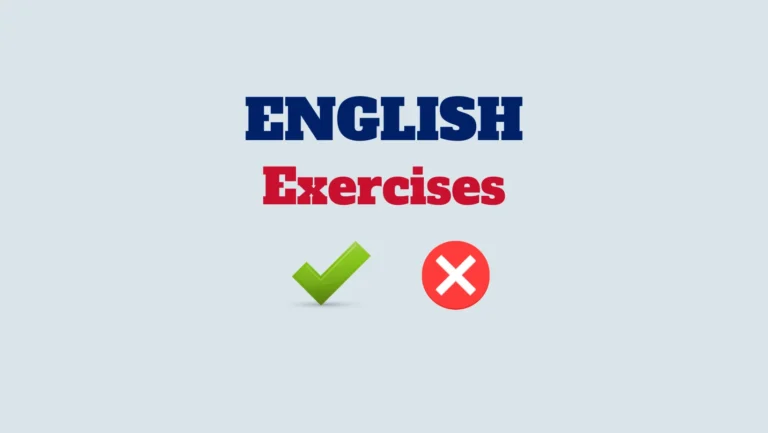Welcome to this new listening activity! In this lesson, you will explore the origin and significance of a ubiquitous word in the English language: “OK.” You might have heard or used this two-letter word countless times in daily conversations, but have you ever wondered where it came from and what it truly means? Through this engaging video, we will delve into the attractive history behind “OK” and uncover how it has become an integral part of our communication. To check your understanding of the video, we have a short quiz for you.
Watch the video and listen
Video transcript (click here ⬅)
(00:00) There’s a two-letter word that we hear everywhere. OK. Okay. OK, are you OK Annie? OK OK OK, OK ladies… OK might be the most recognizable word on
the planet. OK! OK. It’s essential to how we communicate with
each other, and even with our technology. Alexa, turn off the living room light. OK. You probably use it every day – even if
you don’t notice it.
(00:24) But, what does OK actually mean? And where did it come from? Hm. OK. Okay then. OK, thank you. OK actually traces back to an 1830s fad of intentionally misspelling abbreviations. Young “intellectual” types in Boston delighted
those “in the know” with butchered coded messages such as KC, or “knuff ced”, KY,
“know yuse,” and OW, “oll wright.”
(00:47) Haha. But thanks to a couple of lucky breaks, one
abbreviation rose above the rest: OK, or “oll korrect.” In the early 1800s, “all correct” was
a common phrase used to confirm that everything was in order. Its abbreviated cousin started going mainstream
on March 23, 1839, when OK was first published
(01:09) in the Boston Morning Post. Soon other papers picked up on the joke and
spread it around the country, until OK was something everyone knew about, not just a
few Boston insiders. And OK’s newfound popularity even prompted
a flailing US president from Kinderhook, New York, to adopt it as a nickname during his
1840 reelection campaign.
(01:31) Van Buren’s supporters formed OK Clubs all
over the country, and their message was pretty clear: Old Kinderhook was “oll korrect.” The campaign was highly publicized and turned pretty nasty in the press. His opponents ended up turning the abbreviation
around on him, saying it stood for “Orful Konspiracy” or “Orful Katastrophe”
(01:51) Hah. In the end, even a clever nickname didn’t save Van Buren’s presidency. But it was a win for OK. That 1840 presidential campaign firmly established
OK in the American vernacular. And while similar abbreviations fell out of
fashion, OK made the crossover from slang into legitimate, functional use thanks to
one invention: the telegraph.
(02:10) If we lower the bridge, the current flows
to the sounder. At the other end, the current energizes an
electromagnet and this attracts the armature. The armature clicks down against a screw and
taps out a message.
The telegraph debuted in 1844, just five years after OK. It transmitted short messages in the form
of electric pulses, with combinations of dots
(02:32) and dashes representing letters of the alphabet. This was OK’s moment to shine. The two letters were easy to tap out and very
unlikely to be confused with anything else. It was quickly adopted as a standard acknowledgment
of a transmission received, especially by operators on the expanding US railroad.
(02:52) This telegraphic manual from 1865 even goes
as far as to say that “no message is ever regarded as transmitted until the office receiving
it gives O K.” OK had become serious business. But there’s another big reason the two letters
stuck around, and it’s not just because they’re easy to communicate. It has to do with how OK looks.
(03:10) Or more specifically, how the letter K looks
and sounds. It’s really uncommon to start a word with the letter K in English — it’s ranked around 22nd in the alphabet. That rarity spurred a “Kraze for K” at
the turn of the century in advertising and print, where companies replaced hard Cs with
Ks in order to Katch your eye.
(03:27) The idea was that modifying a word — like
Klearflax Linen Rugs or this Kook-Rite Stove, for example — would draw more attention
to it. And that’s still a visual strategy: We see
K represented in modern corporate logos, like Krispy-Kreme and Kool-Aid. It’s the K that makes it so memorable. By the 1890s, OK’s Bostonian origins were
already mostly forgotten, and newspapers began
(03:49) to debate its history — often perpetuating
myths in the process that some people still believe. Like the claim that it comes from the Choctaw
word ‘okeh,’ which means ‘so it is.’ Choctaw gave us the word OK… OK’s beginnings had become obscure but it
didn’t really matter anymore — the word was embedded in our language.
(04:12) Today, we use it as the ultimate “neutral
affirmative.” OK then. Okay then. Learn to truly love yourself. OK. OK. Get yourself up here! OK! I don’t know what to say. Say OK. OK. It’s settled then! Allan Metcalf wrote the definitive history
of OK, and he explains that the word “affirms without evaluating,” meaning it doesn’t
convey any feelings — it just acknowledges
(04:37) and accepts information. If you “got home OK,” it just means you
were unharmed. If your “food was OK,” then it was acceptable. And “OK” confirms a change of plans. It’s is sort of a reflex at this point — we
don’t even keep track of how much we use it. Which might be why OK was arguably the first
word spoken when humans landed on the moon.
(04:56) Not bad for a corny joke from the 1830s. Alright guys, cut it out.
Uncover your listening skills with this quiz
And there you have it, learners! We’ve uncovered the captivating story behind the word “OK” and how it has evolved to become a fundamental aspect of English communication. From its humble beginnings as a playful abbreviation to its widespread adoption in various forms of technology, “OK” has truly left an indelible mark on the English language. So the next time you hear or use this simple word, remember its rich history and significance in our everyday interactions. Keep practicing your English skills, and until next time, remember, it’s all “OK“!



